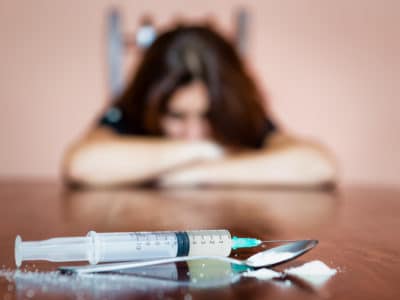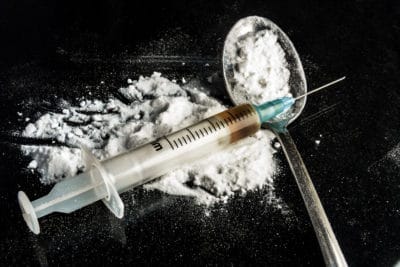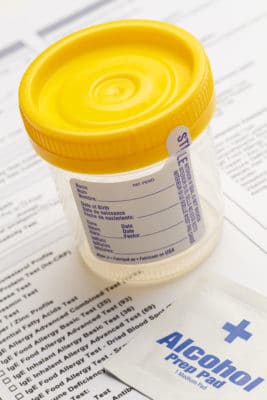
Treating heroin addiction requires a multifaceted approach. Heroin treatment may require therapy, medication, lifestyle changes and help from support groups. At New Day Recovery, we want to help you reach your goal of sobriety and know that you do have substance abuse treatment options, even if that seems impossible now. If you’re addicted to heroin and want help, reach out to us at 330-953-3300. We’re here to help at any time.
Is Heroin an Opioid Drug and Other Questions
Yes, heroin is a highly addictive opioid. It’s a processed drug and a derivative of morphine. Normally, people see it in the form of a white or brown powder. It can be inhaled, ingested or injected. Of all opiates, heroin is among the most abused.
What makes heroin so dangerous?
One thing that makes this addiction so dangerous is that heroin is normally cut with other drugs or substances. This changes the purity of the drug, which means that it may be difficult to know what you’re even ingesting. The impurities in this drug are part of the reason that so many people have heroin overdoses. They believe taking the same dosage of heroin won’t be a problem, but the opioid could be cut with a more dangerous drug, like fentanyl, and the same amount used previously could now result in an overdose death. Heroin on the street has a staggering range of 3% to 99% pure.
Why is heroin such an addictive drug?

Heroin is addictive because of how it interacts with the opioid receptors in the brain. Once you use it, it enters the blood and passes through the blood-brain barrier. It accesses the part of the brain that creates the reward sensation and can eventually change the brain’s ability to produce a rewarding feeling naturally without the use of heroin.
With a natural feeling of euphoria impossible due to the changes in the brain, many people turn to the drug to get the feeling artificially.
As they repeatedly use the drug, the body becomes conditioned to it. Quitting doesn’t just remove the euphoric high; it can also lead to health problems with long-term effects and even scary heroin withdrawal symptoms. Those symptoms often play a role in driving drug-free people back to heroin use.
What Are the Signs of Heroin Addiction?
No two patients are exactly alike, but there are some common signs and effects of heroin, including:
- Disorientation
- A tired appearance
- Weight loss
- Cuts or bruises from skin picking
- A runny nose
- Hyper-alertness and sudden nodding off
- Constricted pupils
- Sudden changes in behavior
- Cold flashes
- Dry mouth
- A warm flushing of the skin
- Shortness of breath
Some items you may discover that could be signs of drug use include:
- Water pipes
- Missing shoelaces
- Burned silver spoons
- Gum wrappers or foil with burn marks
- Straws with burn marks
- Small plastic bags of a white powdery substance
Some changes in a person’s behavior that you may notice include:
- Sudden decreases in performance at school or work
- Lying
- Avoiding eye contact
- A loss of motivation
- Slurred, garbled speech
- A lack of interest in favorite activities
- Stealing or borrowing money
- Declining self-esteem
- Wearing long sleeves or pants to hide needle marks
These are not all-inclusive lists. Many of these symptoms can overlap with other kinds of addiction as well as medical conditions and mental health disorders. If you believe that someone you know is a heroin user, it may be time to reach out for professional substance use assistance with an intervention.
What Are Some Heroin Street Names?
Heroin has a long list of street names. Some common slang terms include:
- Big H
- Beast
- Hero
- China white
- Brown
- Horse
- Snow
- Junk
- Skag
- Dope
- Smack
You may wonder why there are so many different names, but the answer is simple. Drug dealers often come up with new names to avoid detection by the authorities.
On top of “pure” heroin’s nicknames and slang terms, there are terms for heroin mixtures. Common combinations and their names include:
- Chocolate bars: A combination of Xanax and heroin
- Screwball: Methamphetamine and heroin
- H-bomb: Ecstasy and heroin
- Atom bomb/A-bomb: Marijuana and heroin
- Dragon rock: Crack and heroin
- El Diablo: Cocaine, marijuana and heroin
- LBJ: LSD, PCP and heroin
How Long Does Heroin Stay in Your System?

The effects of heroin begin almost immediately. The intense euphoria that comes with opium drug use may last between 45 seconds and a few minutes, but some of the other effects usually peak within two to five minutes. Sedation, which is a common side effect, may last longer.
Heroin is a strong opium drug but has a short half-life. It will take between two and four days for the drug to leave your body and not show up on a urine test.
While the opium poppy plant drug shows up on a drug urine test for several days, it is actually processed by the body quickly. The half-life is only two to six minutes. It’s then broken down into 6-acetylmorphine and morphine. Morphine has a half-life of 1.5 to seven hours, and 6-acetylmorphine has a half-life of six to 25 minutes. It takes approximately four to five half-lives before the drug will be eliminated from the body completely, though this varies depending on the user.
When patients and their families ask how long heroin stays in the body, the real question is usually how long the withdrawal symptoms will last. Withdrawal symptoms start between six and 12 hours after the last dose. These symptoms can last up to 12 days.
Reach Out to Our Drug Rehab in Ohio for Addiction Help
It’s always a good day to start sooner rather than later on the path to recovery. Successful heroin treatment is possible, and we are here to help you every step of the way at our drug and alcohol rehab in Ohio. Please reach out to us through our contact form to learn more about our substance abuse treatment services and how we can help you on the road to sobriety.




